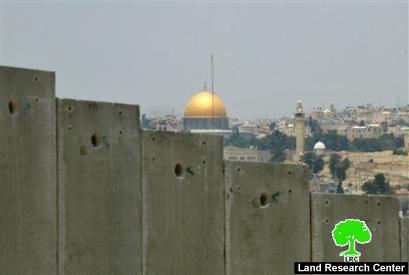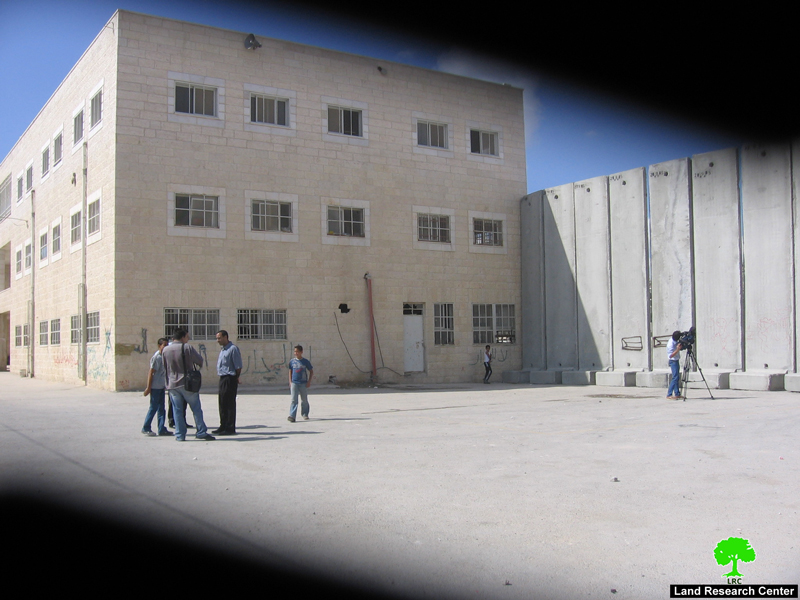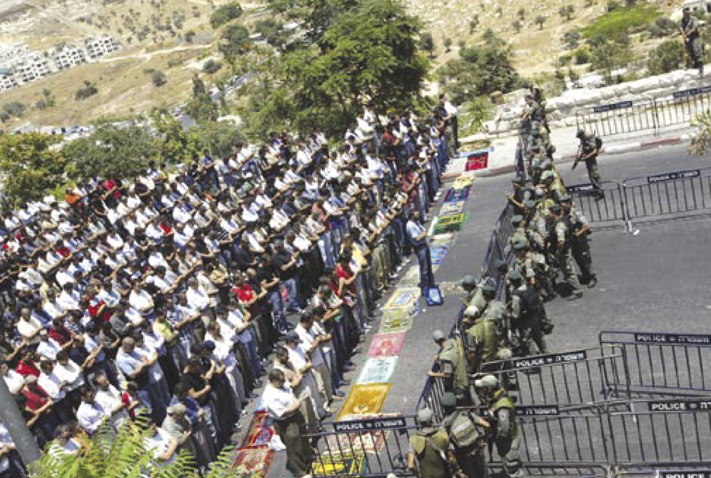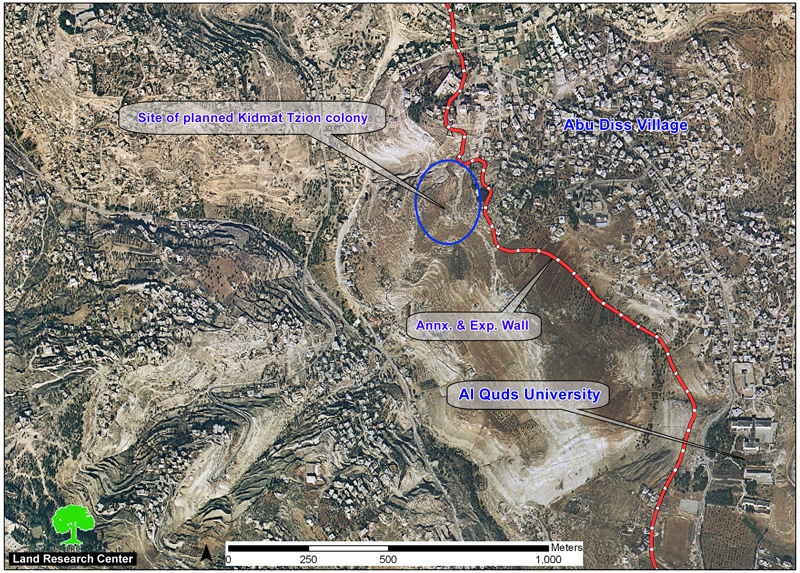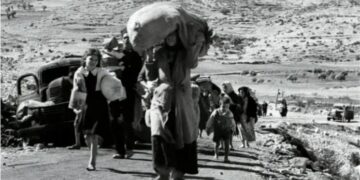The Israeli occupation authorities carry on with their policies of aggression, expansion, deprivation and humiliation of Palestinian people in the occupied territories as a whole, including Jerusalem. The following is a brief exposure of humanitarian conditions of the Palestinian people in Jerusalem governorate:
Movement restrictions
By the end of September 2006, the Israeli occupation placed 120 military checkpoints and crossing terminals in and around Jerusalem. These checkpoints and terminals prevent 3,000,000 Palestinians from the West Bank and Gaza Strip from accessing Jerusalem. Meanwhile, the Israeli Segregation Wall has hindered and/or prevented access to the city of 93.4% of Palestinian families that live inside of the Wall area and 91.2% of families that live outside of the Wall area. ( Source- PCBS- BADIL study ). The time spent to pass checkpoints was an obstacle for 94.7% of the households, whereas timing of passage considered as obstacle for 92.7% of the households ( Source-Ibid).
On the other hand, the percentage of the persons who changed their place of residence for the first time after the beginning of constructing the Wall in 2002 amounted to 53.9% of the total persons changed their previous place of residence. The Wall was the main cause for changing place of residence of 17.3% of total persons who have changed their previous place of residence. ( Source-Ibid).
About 21.4% of Palestinian households reported to have at least one member who was separated from relatives. In addition, 18% of the Palestinian households in Jerusalem governorate were separated from the father, whereas 12.7% of the households are separated from the mother ( Source-Ibid).
The ability of 84.6% of the households to visit family and relatives has been affected by the Wall. About 56% of the household were affected in their ability to practice cultural and social activities and entertainment. The percentage of households which faced obstacles to marry a partner living on the other side of the Wall has increased from 31.6% before the construction of the Wall to 69.4% after the construction of the Wall ( Source-Ibid).
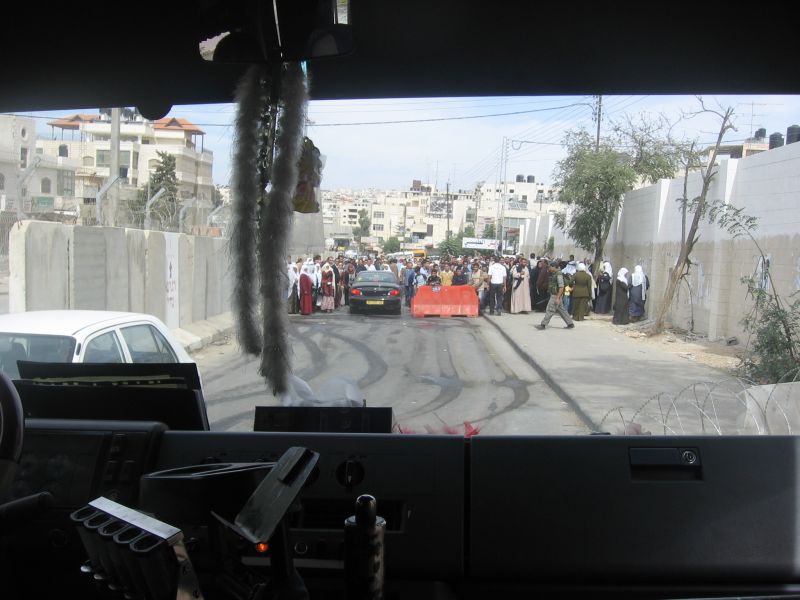
Photo 2: A crowd of people waiting at the Wall gate in Beit Hanina between Jerusalem and Ramallah)
Residency restrictions
The Israeli occupation forces confiscated 7000 Israeli residency cards (Jerusalem Israeli ID�s) from Palestinian Jerusalemites of whom the majority are heads of households. This means that 36,000 Jerusalemites cannot 'legally' reside in their city of Jerusalem. On the other hand, Over 13,000 Palestinian children are left without any form of identification such as birth and health certificates, documents for access to education, denial of family unification, and, hence, no right to live in their city. The Israeli Segregation Wall forced 32.9% of the Palestinian Jerusalemites to change their current place of residence. In other words, 18.9% of the Palestinian Jerusalemite families were forced to change their place of residence as a result of the Wall, Israeli taxation policies, and the lack of housing.
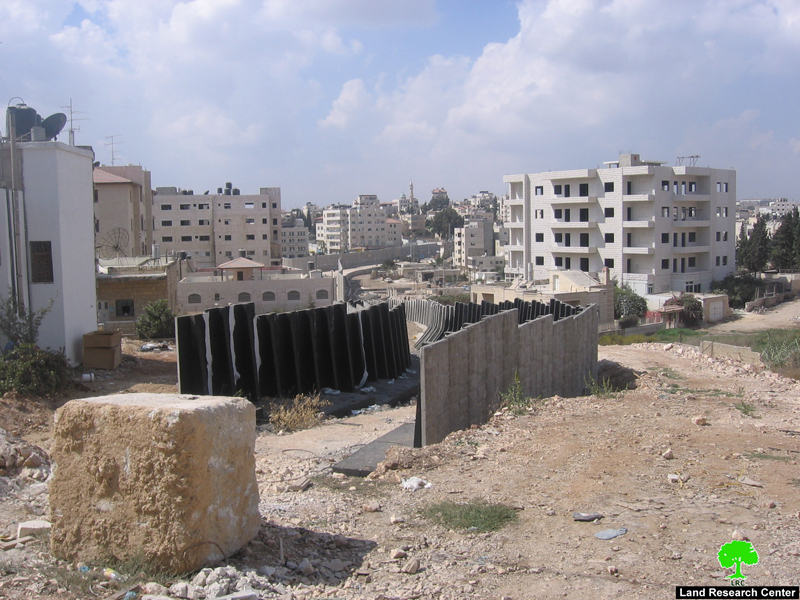
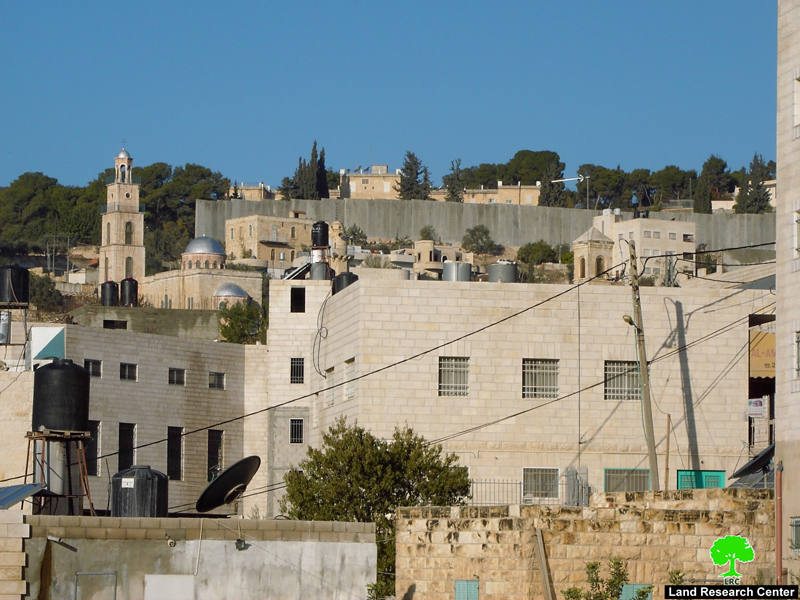
Photo 3 & 4: Walls separating between Palestinian Jerusalemites In Beit Hanina, Izzariya and their city)
Continuous war against housing
The Israeli occupation forces seized, destroyed and demolished 784 Palestinian homes during the period from the year 2000 to October 2006. This year only, a total of 64 homes were demolished from January to November making 362 people homeless of whom 211 are children. Also, from the beginning of this year the Israeli occupation forces evicted 5 families, seized their homes and forcibly displaced 31 people of whom 8 were children.
Palestinians in Jerusalem own only 17% of housing units despite the fact that they constitute 34% of the population. More than 1/3 of Palestinian Jerusalemites live in homes threatened with demolition under the pretext that more than 20,000 of the built homes are �illegal.�
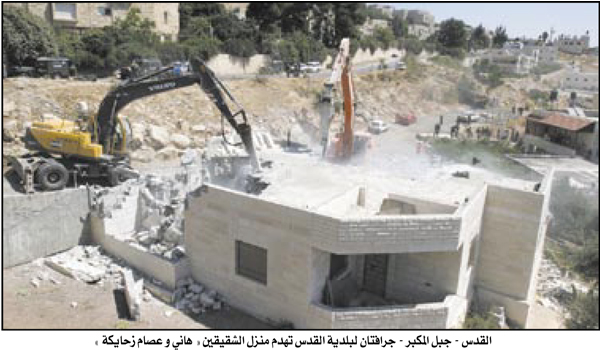
Photo 5: Israeli bulldozers demolishing the Zahaika family houses in Al- Mukaber neighborhood.
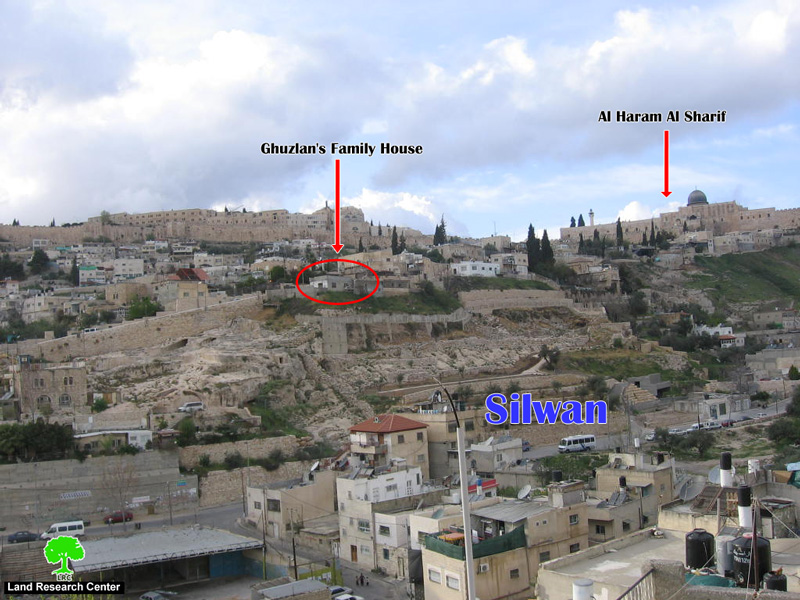
Photo 6: The Ghuzlan family's houses seized by the Jewish settlers in Silwan
Bad Health situation
34.5% of Palestinian Jerusalemite families face difficulties regarding access to health facilities due to the Wall. 68% of medical staff in Jerusalem face difficulties and are at times prevented from accessing their work place because of the Wall. 31.3% of Jerusalem families were not able to access medical care due to the prevention of medical staff from reaching the area because of the Wall. ( Source- PCBS, BADIL study).
Deteriorated educational situation
Palestinian Jerusalemites pay 35% of the municipality taxes and receive less than 6% of its services. According to a report by the Municipality of occupied Jerusalem, there is no space for 14,005 Palestinian Jerusalemite students in the 37 Israeli run government schools. Moreover, the academic standard of students from these schools is the lowest in the city. According to PCBS- BADIL study, there is a lack of 1,300 classrooms for Palestinians in Jerusalem. More than 45,000 students reported that they were unsatisfied with places of education and found them 'unsuitable.' As a result of the Wall, 20-50% of students that attend Palestinian private schools in Jerusalem are prevented from accessing their schools, and, hence, facing threat of closure. 72% of university students in Jerusalem were forced to miss school days due to inaccessibility to their universities as a result of the Wall. The Israeli Wall infringes on land that belongs to Anata Secondary School and Al-Quds University. About 80% of the households with students in higher education used alternative roads to reach university/college. About 75.2% of the households with students enrolled in basic/ secondary education reported to use alternative roads to reach schools. In addition, 72.1% of the households with students in higher education were forced to be sometimes absent from university, compared with 69.4% for households with students enrolled in basic/ secondary education ( Source- PCBS, BADIL study).
Photo7: The Segregation Wall infringes on lands that belong to Anata town Secondary School -East Jerusalem
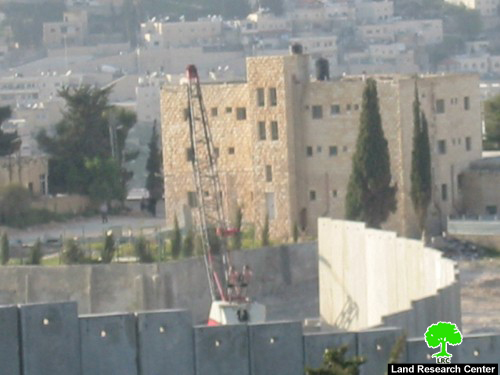
Photo 8: The campus of Al Quds university in Abu Dis town surrounded by the Segregation Wall
Limited access to places of worship
-
The Israeli occupation forces prevent Christian and Muslim Palestinians outside of the Wall area in Jerusalem from accessing places of worship in the city, such as the Holy Sepulcher Church and Al-Aqsa Mosque in Jerusalem. At the same time, the Israeli authorities allow foreign nationals of whom many are Jews to openly and freely access places of worship in the city.
-
The Israeli authorities and settlers dug and opened a tunnel under Al-Aqsa Western Wall and set up an archeological exhibition there on September 22, 2006.
-
On October 14, 2006 the Israeli military forces opened fire and shot tear gas and sound bombs on worshipers who were on their way to Al-Aqsa mosque during the holy month of Ramadan Injuring a driver and detaining 15 other people.
-
The Israeli police apply administrative orders, under the pretext of security, to prevent a number of Jerusalemites from accessing the Al-Aqsa mosque for a period of six months. These orders are renewable.

Photo 9: Palestinian worshippers climbing the Segregation Wall to enter the city of Jerusalem
Al �Aqsa Mosque), Photo courtesy of Al- Quds newspaper
Photo 10: Muslim prayers pray out side the old city walls after being denied entry into Al Aqsa mosque
Photo courtesy of Photographer Awad Awad
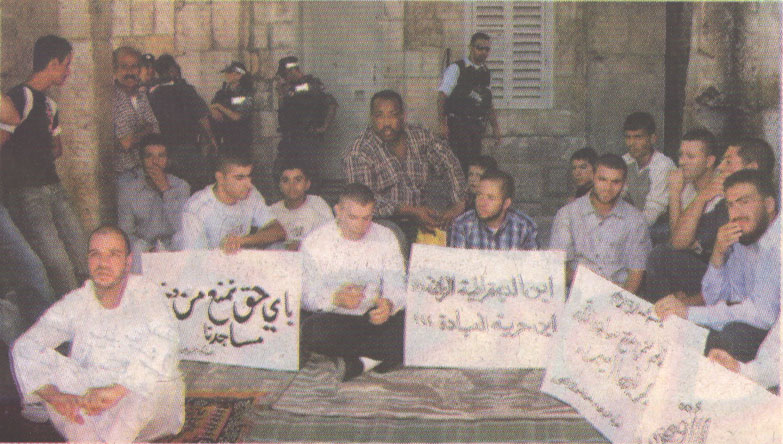
Photo 11: Palestinians stage a sit in protesting the Israeli police's administrative decision preventing them from entering the Al Aqsa mosque
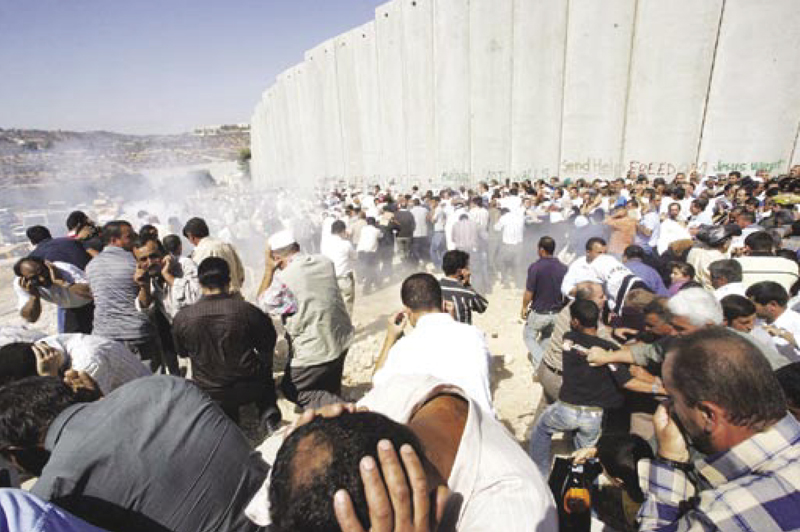
photo 12: Palestinian prayers welcomed with gas and sound bombs at the Wall gate between Bethlehem and Jerusalem on Ramamdan Friday
Violations against Property and Land
-
The percentage of households in Jerusalem governorate whose all or part of their lands was confiscated is 19.2% ( 5.3% inside of the Wall and 31.4% outside of the Wall) Source- PCBS, BADIL study.
-
On September 12, 2006, the Israeli Municipality of occupied Jerusalem disclosed a plan encompassing 15 colonial projects to be carried out in the Old City of Jerusalem and its immediate environs.
-
The Israeli municipality seized 2000 dunums of land belonging to the Palestinian village of Al-Walaja at the southern edge of Jerusalem to build 12,400 housing units for 52,000 Jewish settlers.
-
The Israeli government signed a planunder the name of �Eastern Jerusalem Belt�, to construct 40,000 housing units, 10 hotels, and an industrial area on 12,000 dunums that were confiscated from Palestinian villages in Jerusalem.
-
In order to achieve the above plan, the Israeli occupation authorities demolished 28 houses and plan to demolish another 40.
-
The Israeli occupation authorities began to build a new Jewish colony (Nof Tzion) comprising 400 housing units, on Palestinian village land of Jabal Al-Mukabir in Jerusalem. In addition, there are preparations underway to build a new colony (Kidmat Tzion) comprising 400 housing units on Abu Dis village land. See Photo 13
The Ezariya isolated confiscated land
- In an unprecedented move, the Israeli police offered to exchange a police station and the land surrounding it, which belongs to the people of Silwan village, with Jewish settlers under the condition that they build an alternative police station, on Jerusalem villagers land, in the East Ma�ale Adumim settlement.
- The Israeli government, in clear contravention to international legitimacy and various UN resolutions has announced and began work for the expansion of Jewish colonies in Jerusalem. In Ma'ale Adumim, 342 housing units will be added in addition to 1,960 housing units in Ramat Shlomo, 'Rehkes Shufat.'
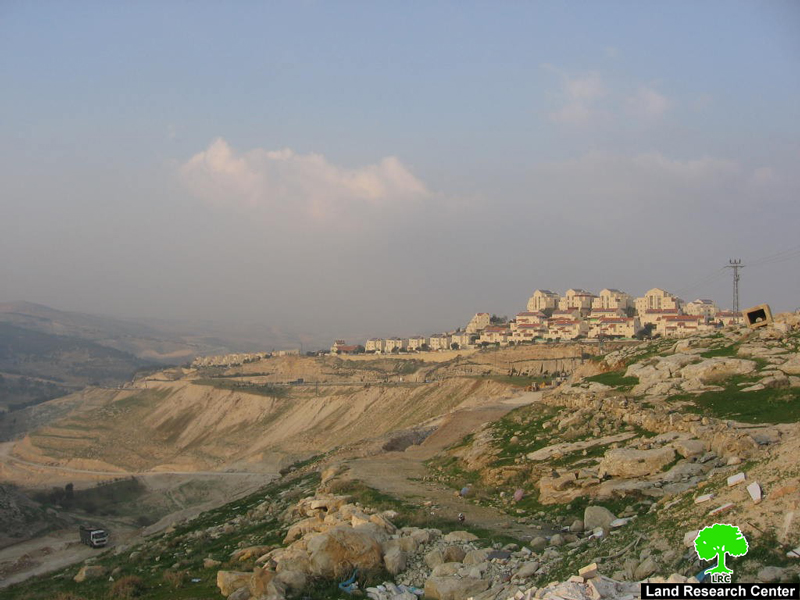
Photo 14: Ezariay (Bethany) village land confiscated and annexed to Ma 'ale Adumim settlement)
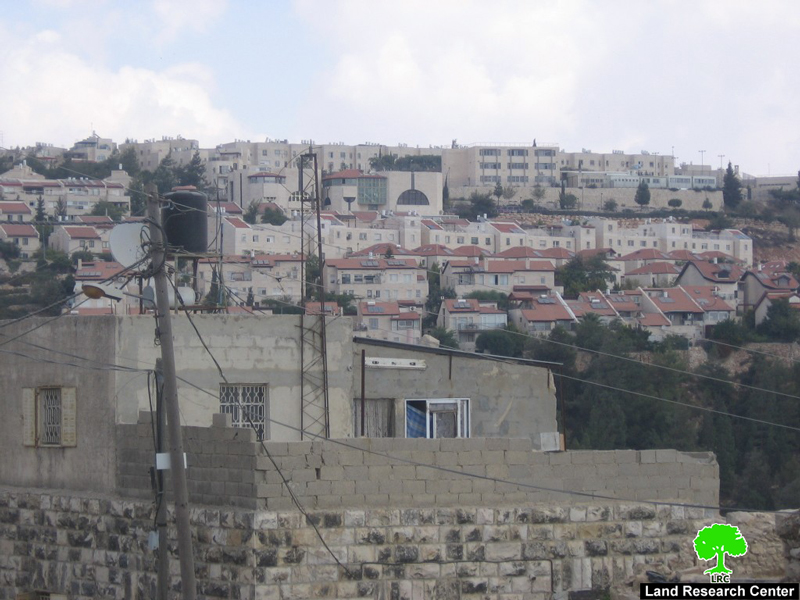
Photo 15: Ramot Jewish setlement advancing towards the Palestinian houses in Beit Iksa village)
Master Plan 2000: A Racist Plan
-
The Plan which was disclosed in the year 2004 by the municipality of the occupied Jerusalem is based on a clear ideological and historical framework that aims to refute the presence of others, both Christians and Muslims.
-
This plans states its aims to demolish historical Palestinian buildings in the Old City of Jerusalem, under the pretext of �the demolition of buildings that are not under the condition for renovation and to maintain a certain city fabric�.�
-
This Plan is a clear contravention to the preservation of religious and historical monuments and an attempt to erase any form of previous civilization. This plan also aims for the destruction of social fabric of the Old City of Jerusalem.
-
(Photo 16: Israeli excavations under Silwan spring compound)
- The goal of this Plan, as pronounced in the executive summary, is 'to create a framework to proceed with the development of the city of Jerusalem as a capital for the state of Israel and a seat for its government.� And �to achieve a long term goal which reflects the future vision for the city as conceived by the City�s �fathers�.�
- According to this Plan, anyone not Jewish �Guyim� can only claim civil right but not political rights in Jerusalem.
- This plan is in contravention of international legitimacy and also of UN General Assembly resolutions 181, 194, and 303 as well as the Security Council resolutions 242, 298, and 478.
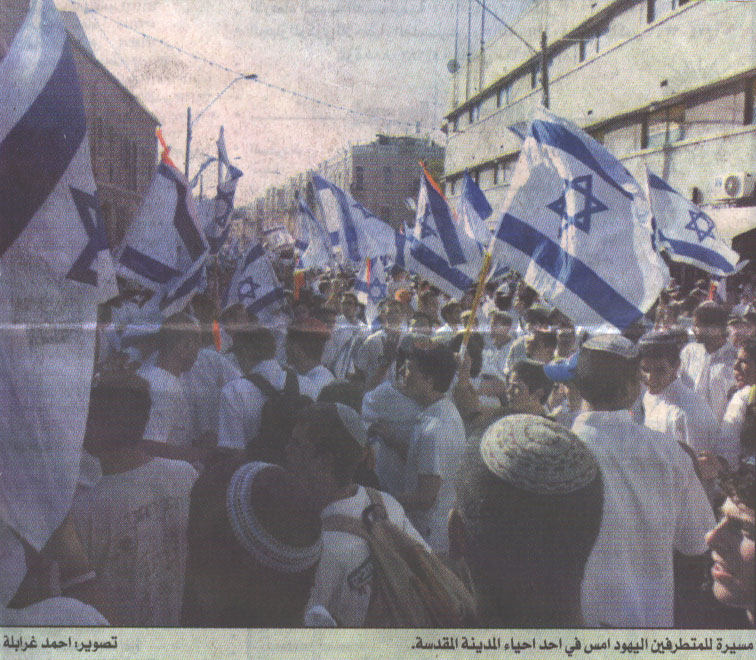
(Photo 17: Israeli settlers marching in the streets of Jerusalem and shouting anti- Arab slogans)
Prepared by
The Land Research Center
LRC


